St. Helena, Ascension und Tristan da Cunha |
|
|
|
| Übersicht – Contents: | |
St. Helena, Ascension und Tristan da Cunha |
|
|
|
| Übersicht – Contents: | |
Flaggen – Flags: |
|
 |
Union Flag → quasi Nationalflagge, Flagge von Großbritannien – flag of United Kingdom, Seitenverhältnis – ratio 1:2, Quelle/Source, nach/by: Wikipedia (EN)    |
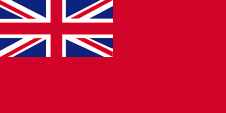 |
Handelsflagge – merchant flag, |
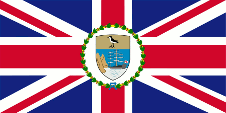 |
seit/since 1999, Flagge des Gouverneurs – flag of the Governor, Seitenverhältnis – ratio 1:2, Quelle/Source, nach/by: Wikipedia (EN), Flags of the World |
St. Helena – Saint Helena: |
|
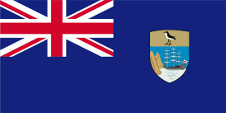 |
seit/since 2019, Flagge der Regierung (Staatsflagge) – flag of the government (state flag), Seitenverhältnis – ratio 1:2, Quelle/Source, nach/by: Wikipedia (EN), Flags of the World, Corel Draw 4    |
Tristan da Cunha: |
|
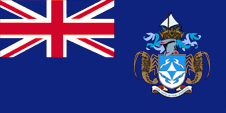 |
seit/since 2002, Flagge der Regierung (Staatsflagge) – flag of the government (state flag), Seitenverhältnis – ratio 1:2, Quelle/Source, nach/by: Wikipedia (EN), Flags of the World |
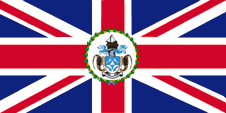 |
seit/since 1999, Flagge des Administrators – flag of the Administrator, Seitenverhältnis – ratio 1:2, Quelle/Source, nach/by: Wikipedia (EN), Flags of the World |
Ascension: |
|
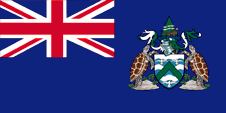 |
seit/since 2013, Flagge der Regierung (Staatsflagge) – flag of the government (state flag), Seitenverhältnis – ratio 1:2, Quelle/Source, nach/by: Flags of the World |
historische Flaggen – historical Flags: |
|
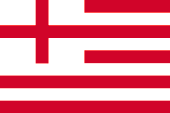 |
ca. 1659–1707, |
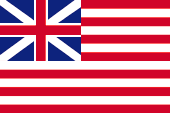 |
1707–1801, |
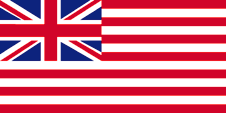 |
1801–1833, |
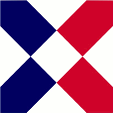 |
ca. 1811, Tristan da Cunha, inoffizielle Flagge – unofficial flag, Seitenverhältnis – ratio 1:1, Quelle/Source, nach/by: Flags of the World |
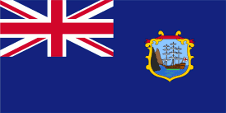 |
1874–1984, St. Helena, Flagge der Regierung (Staatsflagge) – flag of the government (state flag), Seitenverhältnis – ratio 1:2, Quelle/Source, nach/by: Flags of the World, Corel Draw 4 |
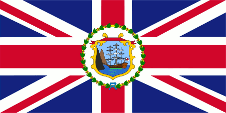 |
1944–1984, St. Helena, Flagge des Gouverneurs – flag of the Governor, Seitenverhältnis – ratio 1:2, Quelle/Source, nach/by: Wikipedia (EN), Flags of the World |
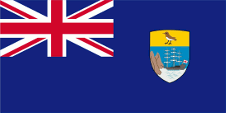 |
1984–2019, St. Helena, Flagge der Regierung (Staatsflagge) – flag of the government (state flag), Seitenverhältnis – ratio 1:2, Quelle/Source, nach/by: Flags of the World, Corel Draw 4 |
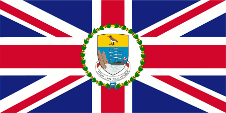 |
1984–1999, St. Helena, Flagge des Gouverneurs – flag of the Governor, Seitenverhältnis – ratio 1:2, Quelle/Source, nach/by: 1.) Flags of the World, 2.) Flags of the World |
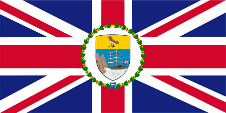 |
1999–2019, St. Helena, Flagge des Gouverneurs – flag of the Governor, Seitenverhältnis – ratio 1:2, Quelle/Source, nach/by: 1.) Flags of the World, 2.) Flags of the World |
| St.
Helena und seine Dependenzen sind britische Außenbesitzungen. Ihre Flaggen
unterliegen den Regelungen des britischen Ensign-Systems. St. Helena und
seine Dependenzen wurden 1833 eine britische Kronkolonie, die Flagge
Großbritanniens wurde gehisst, die Inseln wurden Teil des United Kingdom,
erhielten eine eigene Verwaltung und einen eigenen Gouverneur. An Land, bis
1864 auch zur See, repräsentierten der einzelne Bürger und auch die Behörden
ihren Status als Bürger oder Organe des United Kingdom, durch die Verwendung
des Union Jack, dann "Union Flag" genannt. Großbritannien hatte in Jahr 1864
ein Flaggensystem eingeführt, in dem: • Kriegsschiffe einen sogenannten "White Ensign" (Marineflagge), eine weiße Flagge oft mit durchgehendem roten Georgskreuz und mit dem Union Jack in der Oberecke, • Handelsschiffe einen "Red Ensign" (auch "Civil Ensign" → Bürgerflagge genannt, die eigentl. Handelsflagge), eine rote Flagge mit dem Union Jack in der Oberecke, und • Dienstschiffe einen "Blue Ensign" (Regierungsflagge → die eigentliche Staatsflagge), eine blaue Flagge mit dem Union Jack in der Oberecke führten. Seit 1865 durften Schiffe von Kolonialregierungen einen Blue Ensign mit einem Badge (Abzeichen) im fliegenden Ende verwenden. Für alle anderen Zwecke war ab diesem Zeitpunkt an Land ausschließlich der britische Union Jack zu verwenden und zur See die übliche rote britische Handelsflagge, der "Red Ensign". Wenn die britische Admiralität der Kolonie die entsprechende Erlaubnis erteilt hatte, durften Handelsschiffe und private Seeleute dieser Kolonien einen Red Ensign mit dem Bagde führen. Dies war für St. Helena nicht der Fall. In den Jahren 2002 bzw. 2013 wurden auf den Dependenzen Tristan da Cunha und Ascension eigene Dienstflaggen ("Blue Ensigns") für die Nutzung durch die Behörden eingeführt. |
Saint
Helena and its dependencies are British possessions. Their flags are subject
to the regulations of the British Ensign system. St. Helena and its
dependencies became a British crown colony in 1833, the flag of United
Kingdom was raised, the islands became part of the United Kingdom, received
their own administration and their own governor. On land, and until 1864
also at sea, the individual citizen and also the authorities represented
their status as citizens or organs of the United Kingdom by the use of the
Union Jack, then called "Union Flag". United Kingdom had introduced a flag system in 1864 in which: • Warships use a so-called "White Ensign" (naval flag), a white flag often with a red St. George's cross throughout and with the Union Jack in the upper corner, • Merchant ships use a so-called "Red Ensign" (also called "Civil Ensign" → citizen flag, the actual merchant flag), a red flag with the Union Jack in the upper corner, and • Governmental ships use a "Blue Ensign" (flag of the government → the actual state flag), a blue flag with the Union Jack in the upper corner. Since 1865, colonial government ships were permitted to use a Blue Ensign with a badge in the flying end. From this point on, only the British Union Jack was to be used for all other purposes on land and the usual red British merchant flag, the "Red Ensign", at sea. If the British Admiralty had granted to the colony the appropriate permission, merchant ships and private sailors from these colony were allowed to use a Red Ensign with the Bagde. This was not the case for Saint Helena. For Tristan da Cunha and Ascension were introduced own governmental flags ("Blue Ensigns") for use by the authorities, in 2002 and 2013. |
| Quelle/Source: Die Welt der Flaggen, Wikipedia (EN), Flags of the World, Volker Preuß | |
Wappen – Coat of Arms: |
|
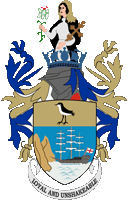 |
seit/since 2019, Wappen von St. Helena – coat of arms of Saint Helena, Quelle/Source, nach/by: Corel Draw 4, sainthelena.gov.sh |
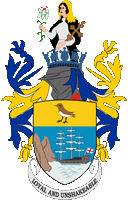 |
1984–2019, Wappen von St. Helena – coat of arms of Saint Helena, Quelle/Source, nach/by: Corel Draw 4 |
 |
seit/since 2019, Bagde (Abzeichen) von St. Helena – Bagde of Saint Helena, Quelle/Source, nach/by: Wikipedia (EN) |
 |
1984–2019, Bagde (Abzeichen) von St. Helena – Bagde of Saint Helena, Quelle/Source, nach/by: Corel Draw 4, Flags of the World |
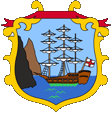 |
1874–1984, Bagde (Abzeichen) von St. Helena – Bagde of Saint Helena, Quelle/Source, nach/by: Flags of the World |
| Das heutige Wappen von St. Helena wurde am 30.01.1984 eingeführt. Es zeigt einen Wappenschild mit einem Dreimaster mit gerefften Segeln und einer englischen Flagge am Heck am Fuß hoher, steiler Klippen. Die Szene gilt als ein Sinnbild für die Inbesitznahme durch die Englische Ostindische Kompagnie im Jahre 1659. Im Schildhaupt ein goldenes Feld mit einem Regenpfeifer, der die hiesige Fauna repräsentieren soll. Links und rechts des Schildes goldene und blaue Decken. Oberhalb des Schildes ein Helm mit einer eisernen Krone aus Wappenschilden und Segeln. Oberhalb der Krone die Heilige Helena mit dem Kreuz. Sie hält eine Blume in der Hand. Unterhalb des Wappenschildes ein Spruchband mit dem Motto der Kolonie: "Loyal and unshakeable" → "Treu und unerschütterlich". Anstelle des kompletten Wappens wird auf der blauen Dienstflagge nur der Wappenschild als Badge (Abzeichen) gezeigt. Vorlage für das erste Badge von Helena aus dem Jahre 1874 war das bis dato verwendete Siegel der Insel, inklusive Bild, verzierendem Rahmen und schmückendem Tuch an der Oberkante. Das Bild zeigte – wie auf dem heutigen Wappen – einen Dreimaster mit gerefften Segeln und einer englischen Flagge am Heck am Fuß hoher, steiler Klippen. Auf derartige Landschaftsszenen wurde in vielen britischen Kolonien zurückgegriffen. Im Jahre 1984 wurde das Wappen für St. Helena und Dependenzen eigeführt. Jedoch wurde nicht das komplette Wappen auf dem Blue Ensign übertragen, sondern nur der Schild des Wappens wurde als Badge verwendet. Im Jahre 2019 wurde die Abbildung des Regenpfeifers mehr der Realität angepasst und das Goldgelb in Gold abgeändert. |
The today's coat of arms
of Saint Helena was introduced on 30th of January in 1984. It shows an
escutcheon with a three-master with reefed sails and an English flag at the
stern at the foot of high, steep cliffs. The scene is considered a symbol of
the taking possession by the English East India Company in 1659. In the head of the shield there is a golden field with a plover, which is supposed to represent the local fauna. Gold and blue blankets appear to the left and right of the shield. Above the shield is a helmet with an iron crown made of heraldic shields and sails. Above the crown appears Saint Helena with the cross. She is holding a flower in her hand. Below the coat of arms there is a banner with the colony's motto: "Loyal and unshakeable". Instead of the complete coat of arms, only the escutcheon is shown as a badge on the blue governmental flag. The template for Helena's first badge from 1874 was the island's previously used seal, including a picture, decorative frame and decorative cloth on the top edge. The picture showed – like on today's coat of arms – a three-master with reefed sails and an English flag at the stern at the foot of high, steep cliffs. Such landscape scenes were used in many British colonies. In 1984 the coat of arms for Saint Helena and Dependencies was introduced. However, not the entire coat of arms was transferred to the Blue Ensign, but only the shield of the coat of arms was used as a badge. In 2019, the image of the plover was adapted more to reality and the golden yellow was changed to gold. |
| Quelle/Source: Die Welt der Flaggen, Wikipedia (EN), Flags of the World, Volker Preuß | |
Landkarte – Map: |
Lage – Position: |
Landkarte des Landes – Map of the Country: |
|
|
| Zahlen und Fakten – Numbers and Facts: | |
|
|
|
|
|
|
|
|
|
|
|
|
|
|
|
|
|
|
St. Helena:
21.05.1502
· der portugiesische Seefahrer João da Nova entdeckt die unbewohnte Insel,
er benennt sie nach der Heiligen Helena, die Insel wird besetzt und eine
Kirche errichtet
1501
· portugiesische Seefahrer entdecken die unbewohnte Insel Ascension
1506
· der portugiesische Seefahrer Tristan da Cunha entdeckt die unbewohnte
Insel, sie erhält seinen Namen
1652
· niederländische Seefahrer entdecken die unbewohnte Insel 20 Kilometer
nordwestlich der heutigen Insel Nightingale, landen unter großen
Schwierigkeiten, können jedoch nicht ins Landesinnere vordringen, daher
nennen sie die Insel "Inaccessible" (die Unerreichbare)
1506
· der portugiesische Seefahrer Tristan da Cunha entdeckt die unbewohnte
Insel 30 Kilometer südwestlich der Insel Tristan da Cunha, die Lage Insel
gerät jedoch in Vergessenheit
1506
· der portugiesische Seefahrer Diego Gonçalo Alvarez entdeckt die unbewohnte
Insel 400 km südöstlich der Insel Tristan da Cunha und gibt ihr seinen Namen
(Diego Alvarez), die Lage Insel gerät jedoch in Vergessenheit |
Saint Helena:
21st of May 1502 · the Portugese seafarer João da Nova discovers
the uninhabited island, he names it by the Saint Helena, the island becomes
occupied and they built a church
1501
· Portugese seafarers discover the uninhabited Ascension Island
1506
· the Portugese seafarer Tristan da Cunha discovers the uninhabited island,
it gets its name
1652
· Dutch seafarers discover the uninhabited island 12,5 miles northwestern of
today’s Nightingale Island, they debark under big difficulties but it is not
possible to reach the interior, because of that they name the island
"Inaccessible"
1506
· the Portugese seafarer Tristan da Cunha discovers the uninhabited island
19 miles southwestern Tristan da Cunha Island, but the position of the
island falls into oblivion
1506
· the Portugese seafarer Diego Gonçalo Alvarez discovers the uninhabited
island 250 miles southeastern of Tristan da Cunha Island and gives it his
name (Diego Alvarez), but the position of the island falls into oblivion |
| Quelle/Source: Atlas zur Geschichte, World Statesmen, Wikipedia (EN), Volker Preuß |
| Der Name der Insel "St. Helena" geht auf den Tag der Entdeckung dieser Insel durch João da Nova zurück. Es war der Namenstag der Heiligen Helena. Helena (ca. 255–ca.330) war die Mutter Kaiser Konstantins des Großen. Sie baute zusammen mit ihrem Sohn Kirchen in Rom und in Heiligen Land. Eine Legende erzählt über ihr Mitwirken bei der Auffindung des Kreuzes von Jesus Christus. | The name of the island "Saint Helena" goes back to the day of the discovery of this island by João da Nova. It was the name day of Saint Helena. Helena (ca. 255–ca.330) was the mother of Emperor Constantin the Great. She build together with her son churches in Rome and in the Holy Land. A legend tells us above her playing a part in the find of the cross of Jesus Christ. |
| Der Name der Insel "Ascension" geht auf den Tag ihrer Entdeckung zurück. Es war der Tag von Christi Himmelfahrt (Ascensus). | The name of the island "Ascension" goes back to the day of its discovery. It was the day of the Ascension of Christ (Ascensus). |
| Der Name der Insel "Tristan da Cunha" ist der Name ihres Entdeckers (im Jahre 1506), eines portugiesischen Seefahrers. | The name of the island "Tristan da Cunha" is the name of its discoverer (in the year 1506), a Portugese seafarer. |
| Der Name der Insel "Inaccessible" geht auf ihre Entdeckung im Jahre 1652 zurück. Es war damals unmöglich ins Landesinnere zu gelangen. Sie wurde "die Unerreichbare" genannt. | The name of the island "Inaccessible" goes back to the day of its discovery in the year 1652. It was at that time not possible to reach the interior. It was named "the Inaccessible". |
| Der Name der Insel "Nightingale" ist der Name eines britischen Forschers, der die Insel im Jahre 1760 erforschte. | The name of the island "Nightingale" is the name of a British explorer who explored the island in the year 1760. |
| Der Name der Insel "Gough" ist der Name ihres Wiederentdeckers, des Kapitäns Gough, der die Insel im Jahre 1731 wieder entdeckte, nachdem ihre Lage seit ihrer Entdeckung im Jahre 1506 in Vergessenheit geraten war. | The name of the island "Gough" is the name of its re-discoverer, of captain Gough, who discovered the island again in the year 1731, after its position fell into oblivion since its discovery in the year 1506. |
| Quelle/Source: World Statesmen, Wikipedia (EN), Volker Preuß | |